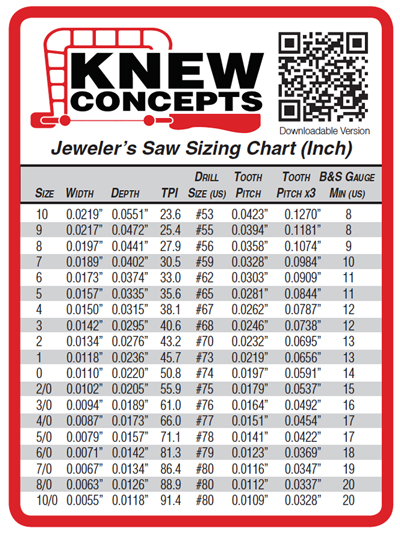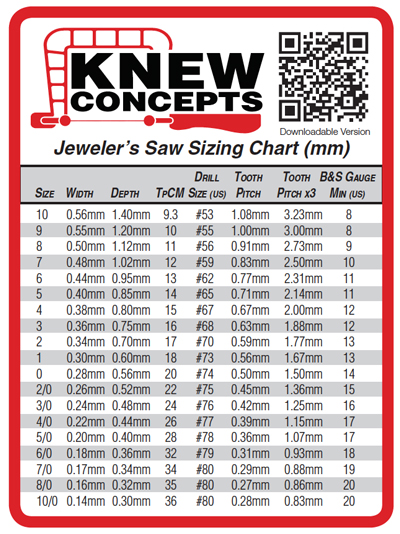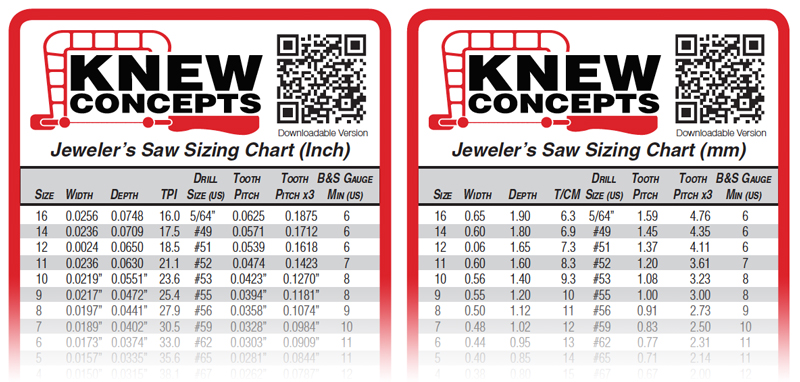Sizing Information for Jeweler’s Saw Blades
Or Fret Saws. They’re the same thing.
These charts are intended to give you information that will let you pick the right blade for your project.
This information is for jeweler’s saw blades, which are intended for metal.
Woodworking blades are the same length, but have coarser teeth. There will be a separate chart for those once we get the information finalized.
This information for jeweler’s blades is based on data provided by the manufacturer specifically for the Herkules White Label blades that we carry.
Other manufacturer’s blades should be close to the same measurements, but they may not be exactly the same.
There are two charts: U.S. inch and metric. Pick whichever you prefer. The small charts only go from 10 to 10/0, while the fullsize chart starts at size 16, and goes down to 10/0.
Important Columns on the Chart, and Why They Matter
Size, Width and Depth should be self explanatory.
TPI (Tooth per inch) or TpCM (Tooth/Centimeter) is the number of teeth per inch/CM. This matters, as it affects the size of blade you should use for a given thickness of material.
Drill Size: is the smallest drill bit you can use to clear a hole for the blade. They are listed in American wire gauge drill bit sizes. For the metric people out there, just use the next larger drill size than the ’Depth’ listing.
Tooth Pitch: is a restating of the TPI measurement, but in terms of the distance from tooth peak to tooth peak.
Three Tooth Engagement is yet another restating of TPI, now doubled. This is the most important of them to know. The reason is that you always want to have at least three teeth per thickness of stock. So if your tooth pitch is .010", 2x is .020. Which means that the thinnest stock you want to cut with that blade is .020". Twice the pitch means you’ll always have at least three three teeth per thickness of material, which makes sure that there is always at least one tooth engaged with the work at all times. This keeps the blade from jumping forward into the spaces between the teeth as it will if all the teeth ever clear the stock at the same time. Which gives a much smoother cut.
B&S Gauge: is the thinnest American Browne & Sharpe gauge stock that will give three tooth engagement on that particular sawblade. B&S gauge is the normal gauge used in the US for precious metals, but is NOT the same as the US Standard Gauge used for steel. Just to confuse things.
For metric people, just use the 3 tooth engagement measurement to figure out what thickness of stock you need for each blade.


